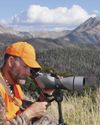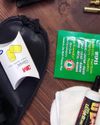Preventing, Recognizing and Treating Hypothermia.

The environment plays a large role in your success as a medic in survival settings. If you don’t take weather conditions and other factors into account, you have made the environment your enemy… and it’s a formidable one.
Different areas might pose special challenges. If you live in Miami, you might be treating a lot of people with heat stroke. If you live in Siberia, you’ll be treating a lot of people with cold-related exposure. In many places, you might be treating both, depending on the time of year.
IF YOU DON’T TAKE WEATHER CONDITIONS INTO ACCOUNT, YOU HAVE MADE THE ENVIRONMENT YOUR ENEMY … AND IT’S A FORMIDABLE ONE.
Illness related to cold temperatures is known as “hypothermia.” Normally, the body core ranges from 97.5 to 99.5 degrees Fahrenheit (36.5 to 37.5 degrees Celsius). Hypothermia begins when the body core drops below 95 degrees.
HEAT LOSS
The body loses heat in various ways.
Evaporation—Perspiration from physical exertion, overheating or other reasons release heat from the body core.
Radiation—The body loses heat to the environment when the surrounding temperature is below the body’s core temperature. For example, you lose more heat if exposed to an outside temperature of 20 degrees (F) than if exposed to 80 degrees (F).
Conduction—The body loses heat when its surface is in direct contact with cold temperatures, as in the case of someone falling from a boat into frigid water. Water, being denser than air, removes heat from the body much faster.
This story is from the January 2017 edition of American Survival Guide.
Start your 7-day Magzter GOLD free trial to access thousands of curated premium stories, and 8,500+ magazines and newspapers.
Already a subscriber ? Sign In
This story is from the January 2017 edition of American Survival Guide.
Start your 7-day Magzter GOLD free trial to access thousands of curated premium stories, and 8,500+ magazines and newspapers.
Already a subscriber? Sign In

IT'S IN THE BAG
3 WAYS TO HANG A BEAR BAG

HOME DEFENSE
YOU DON'T NEED FANCY GEAR. RELY ON BASIC GUNS AND PROVEN DEFENSIVE MEASURES

GOT GAME?
5 REASONS YOU SHOULD ADD HUNTING TO YOUR SELF-RELIANCE PLAN

CONDOR IMPOSSIBLE MACHETE
THIS NOT-SOIMPOSSIBLE MAGHETE DELIVERS

CAN WE FIX IT? YES WE CAN
PUTTING TOGETHER AN EDC TOOL KIT THAT ACTUALLY WORKS

ON YOUR BEST BEHAVIOR
HOW TO AVOID CONFLICTS WITH LOCALS WHEN TRAVELING ABROAD

SPLURGE TOR SAVE?
A GUIDE TO WHICH CAMPING GEAR DESERVES YOUR HARD-EARNED CASH, AND WHICH GEAR TO SKIMP ON

HOLIDAY WISH LIST
LOOKING FOR GIFT IDEAS? WE HAVE YOU COVERED!

You Can Take It With You
Construct a support/ resupply kit that will keep you sharp and ready

City Survival
Nyerges "Urban survival guide" advocates living simply to be resilient against adversity